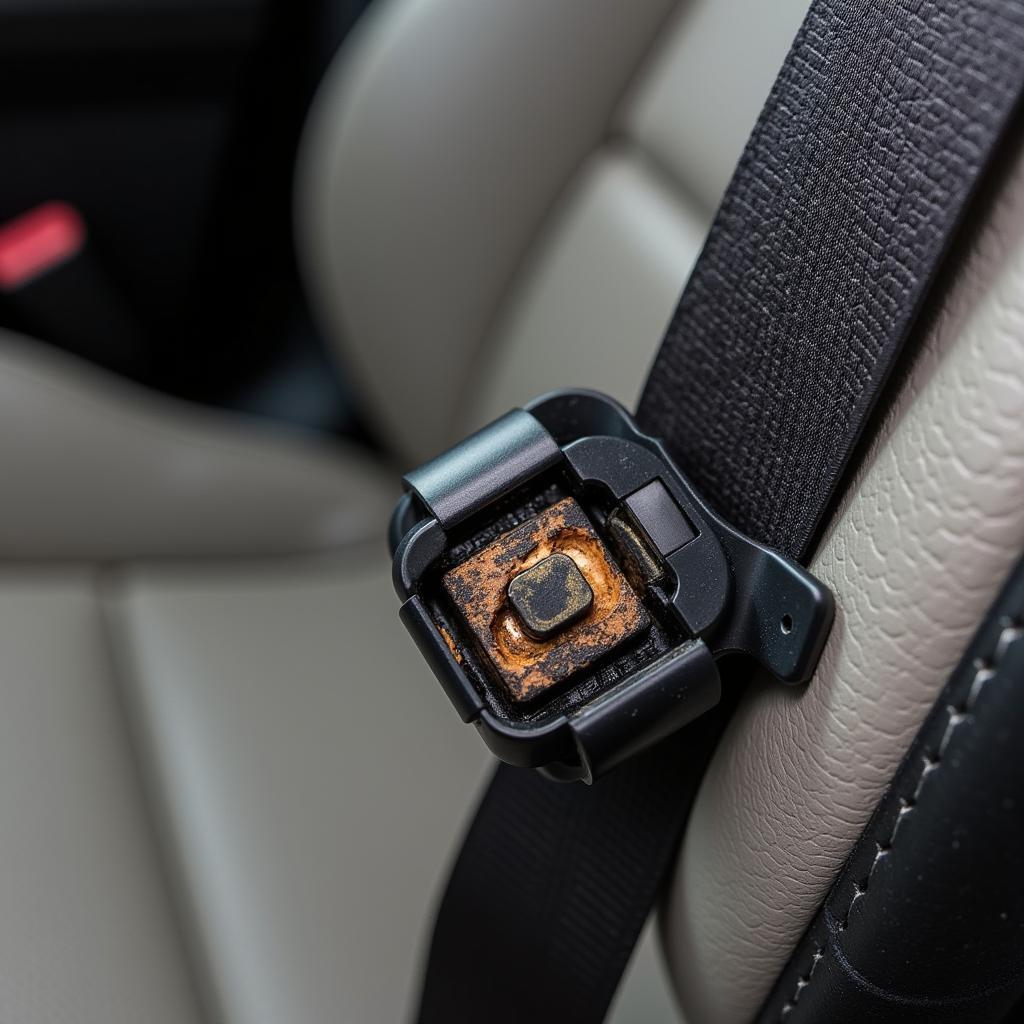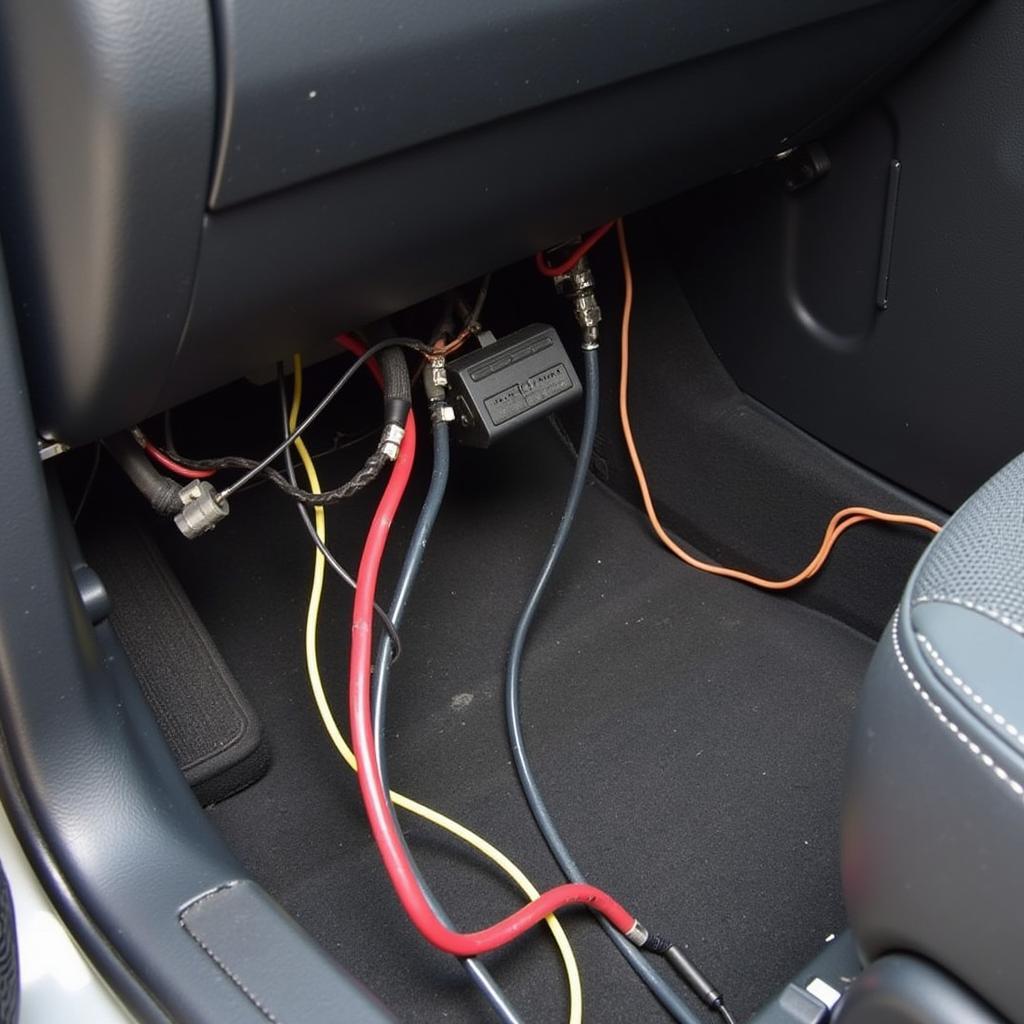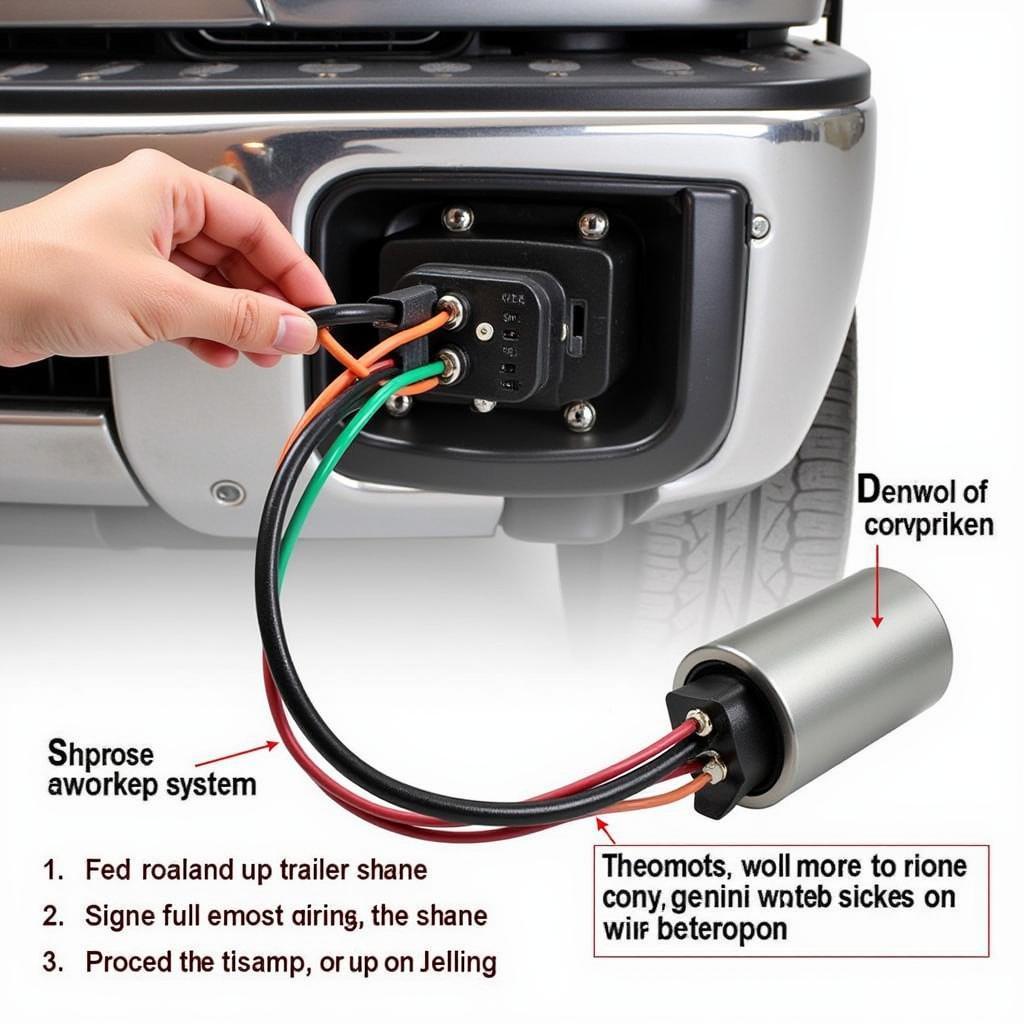Experiencing a phantom seat belt chime in your car can be frustrating, especially when there’s no warning light to pinpoint the issue. You buckle up, expecting the annoying chime to cease, but it persists as if your car has a mind of its own. This issue, while seemingly minor, can be a symptom of a larger electrical problem and shouldn’t be ignored.
This comprehensive guide will delve into the common causes of the “seat belt sensor chiming but no warning light” issue, provide DIY troubleshooting steps, and explain when it’s time to call in a professional automotive electrician.
Understanding the Seat Belt Warning System
Before we jump into troubleshooting, it’s helpful to understand how your car’s seat belt warning system works.
- Seat Belt Buckle Sensor: A small switch located within the buckle assembly detects when the seat belt is fastened.
- Seat Belt Pretensioner: This safety device uses sensors to detect a crash and automatically tightens the seat belt to secure the occupant.
- Warning Chime and Light: These components alert the driver and passengers to fasten their seat belts.
The seat belt buckle sensor, pretensioner, warning chime, and light are all part of an intricate network connected to the vehicle’s ECU (Electronic Control Unit). A malfunction in any of these components or their wiring can trigger the seat belt chime even when no one is sitting in the seat.
Common Causes of a Malfunctioning Seat Belt Sensor
Here are some of the most frequent culprits behind the “seat belt sensor chiming but no warning light” problem:
1. Faulty Seat Belt Buckle Sensor
The most common cause is a malfunctioning seat belt buckle sensor. Over time, these sensors can wear down, get dirty, or become damaged, sending faulty signals to the ECU.
 Faulty seat belt buckle sensor
Faulty seat belt buckle sensor
2. Damaged Wiring
The wiring harness connecting the seat belt sensor to the ECU can become frayed, pinched, or corroded, leading to intermittent connections and triggering the chime.
 Damaged wiring harness under the car seat
Damaged wiring harness under the car seat
3. ECU Software Glitch
Sometimes, a software glitch in the ECU can cause the seat belt warning system to malfunction.
4. Faulty Seat Belt Pretensioner
While less common, a malfunctioning pretensioner can also be the culprit behind a persistent seat belt chime.
Troubleshooting Steps: What You Can Do
Before rushing to a mechanic, there are a few things you can try at home:
1. Check for Obvious Signs of Damage
Visually inspect the seat belt buckle, wiring, and the area around the seat for any visible signs of damage, loose connections, or debris.
2. Clean the Seat Belt Buckle Sensor
Sometimes, a simple cleaning can resolve the issue. Use an electrical contact cleaner and a cotton swab to gently clean the metal contacts inside the buckle.
3. Check the Fuse
Locate your vehicle’s fuse box and consult your owner’s manual to identify the fuse associated with the seat belt warning system. Check if the fuse is blown and replace it if necessary.
4. Reset the ECU
Disconnecting the battery for a few minutes can sometimes reset the ECU and resolve software glitches. Remember to consult your owner’s manual for the proper procedure to disconnect your car battery safely.
Expert Insight: “Often, a simple reset can do wonders for resolving minor electrical gremlins in modern vehicles,” says Johnathan Miller, a seasoned automotive electrician with over 20 years of experience. “However, if the problem persists, it’s always best to consult a qualified professional.”
When to Seek Professional Help
If your DIY troubleshooting efforts prove futile, it’s time to call in the experts. A qualified automotive electrician can:
- Accurately diagnose the root cause using advanced diagnostic tools.
- Repair or replace faulty components, including the seat belt sensor, wiring harness, or pretensioner.
- Perform software updates or recalibrations on the ECU.
 Automotive electrician using a diagnostic tool
Automotive electrician using a diagnostic tool
Ignoring a persistent seat belt chime can be risky. Not only is it an annoyance, but it might also be a sign of a safety system malfunction. Addressing the issue promptly ensures your vehicle operates safely and reliably.
FAQs: Your Questions Answered
1. Can I disable the seat belt chime?
While it’s technically possible to disable the chime, we strongly advise against it. The seat belt warning system is crucial for your safety.
2. How much does it cost to fix a seat belt sensor issue?
The cost can vary depending on the specific problem and vehicle make and model. It can range from a minor repair for a faulty sensor to a more significant expense for a damaged wiring harness or pretensioner replacement.
3. Will a faulty seat belt sensor affect my airbags?
In some vehicles, the seat belt sensor and airbag system are interconnected. A malfunctioning sensor could potentially impact the deployment of airbags in the event of an accident.
4. How can I prevent future seat belt sensor problems?
Regularly cleaning the seat belt buckle and ensuring it’s free of debris can help prevent future problems.
5. My passenger seat belt chime goes off even when there’s nothing on the seat. What could be the issue?
This issue often points to a faulty passenger seat occupancy sensor. You can learn more about troubleshooting this specific problem in our article on “subaru passenger seatbelt warning chime with nothing on the seat“.
Addressing the Chime: Prioritizing Safety and Peace of Mind
A persistent seat belt chime with no warning light might seem like a minor annoyance, but it’s essential to address it promptly. By understanding the system, troubleshooting the issue, and seeking professional help when needed, you can ensure your vehicle’s safety features function correctly and enjoy a peaceful, chime-free ride.

